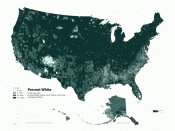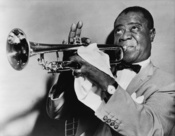Subject Area: Music and American CultureTopic: Jazz: Urban and Rural Reactions in the 1920sIn parallel with the uproar of jazz during the 1920s came the commotion of different critics from various geographical settings. Many of the white people living in rural areas disliked and rejected jazz as a musical genre. However, the urban city-dwellers were more fond of it; therefore, it was more generally accepted and frequently found in city nightclubs and radio stations. Several characteristics of cities also allowed jazz to survive in urban areas over the rural ones, such as: diversity, tolerance, a more progressive attitude, technology (media, radio), more entertainment locations, and a more educated populace. Cities were known for the more relaxed and less-religious atmosphere; in contrast with cities, the rural setting was dominated by a more religious and conservative mood with a homogenous population that was more opposed to the cultural liberalism found in the cities, jazz, and the black society in general.
Unlike the rural areas of the time, the socio-cultural dynamic of urban areas, with respect to tolerance, diversity, education, nightlife, and the media, allowed jazz to thrive and become a huge part of American culture.
The formation of jazz occurred between the years 1897 and 1917. When jazz bands started playing, they had no way of recording their music until 1917; and even then, the quality of these recordings were atrocious. Another aspect of early jazz was that anything that was played was ever written. Jazz evolved from the blues, ragtime, brass band music, and other musical works that were all around the United States. "One important factor that existed only in New Orleans, namely, the black Creole subculture" allowed jazz to emanate from the mentioned city (Weinstock). Another aspect of New Orleans that allowed jazz to thrive in this city...


